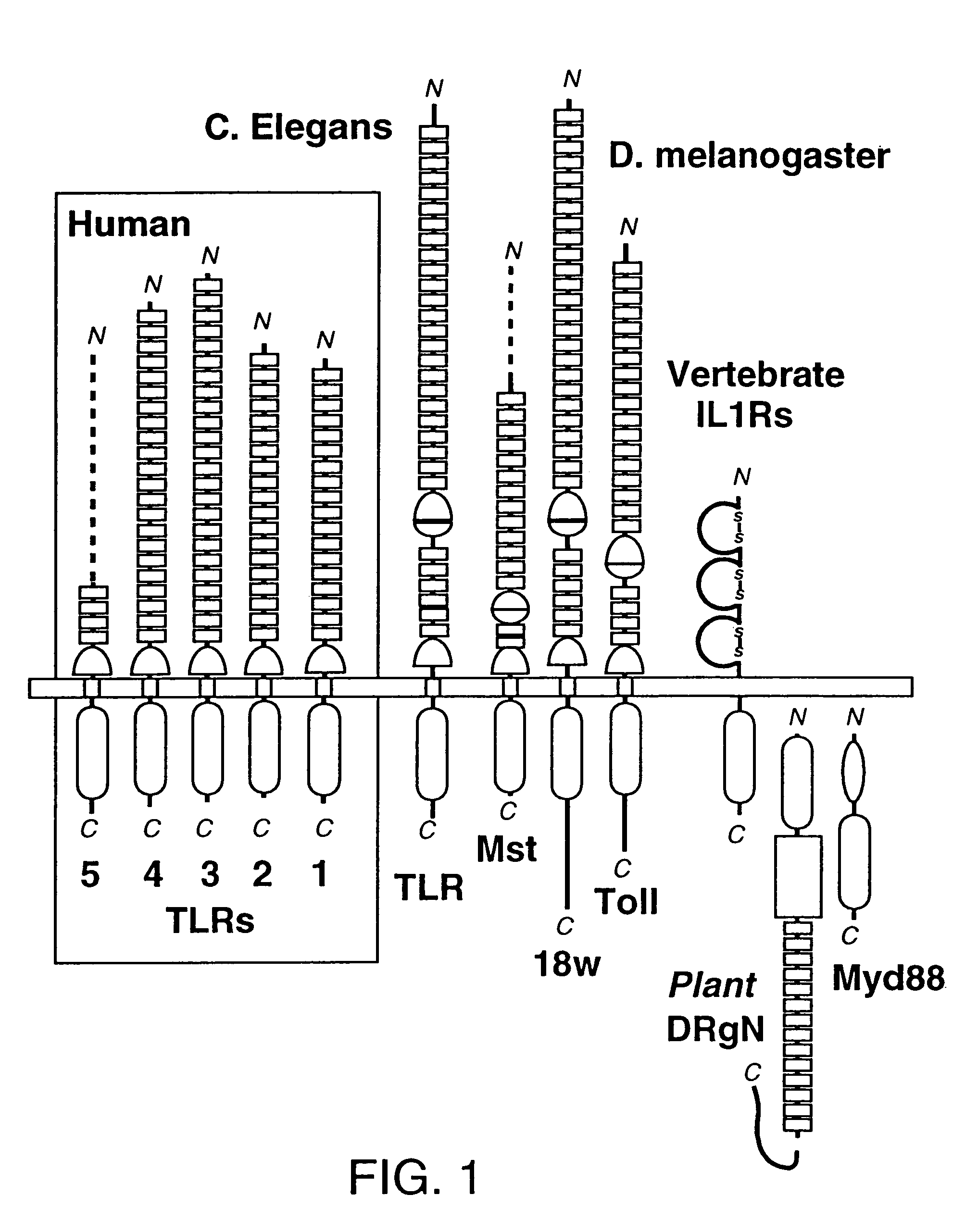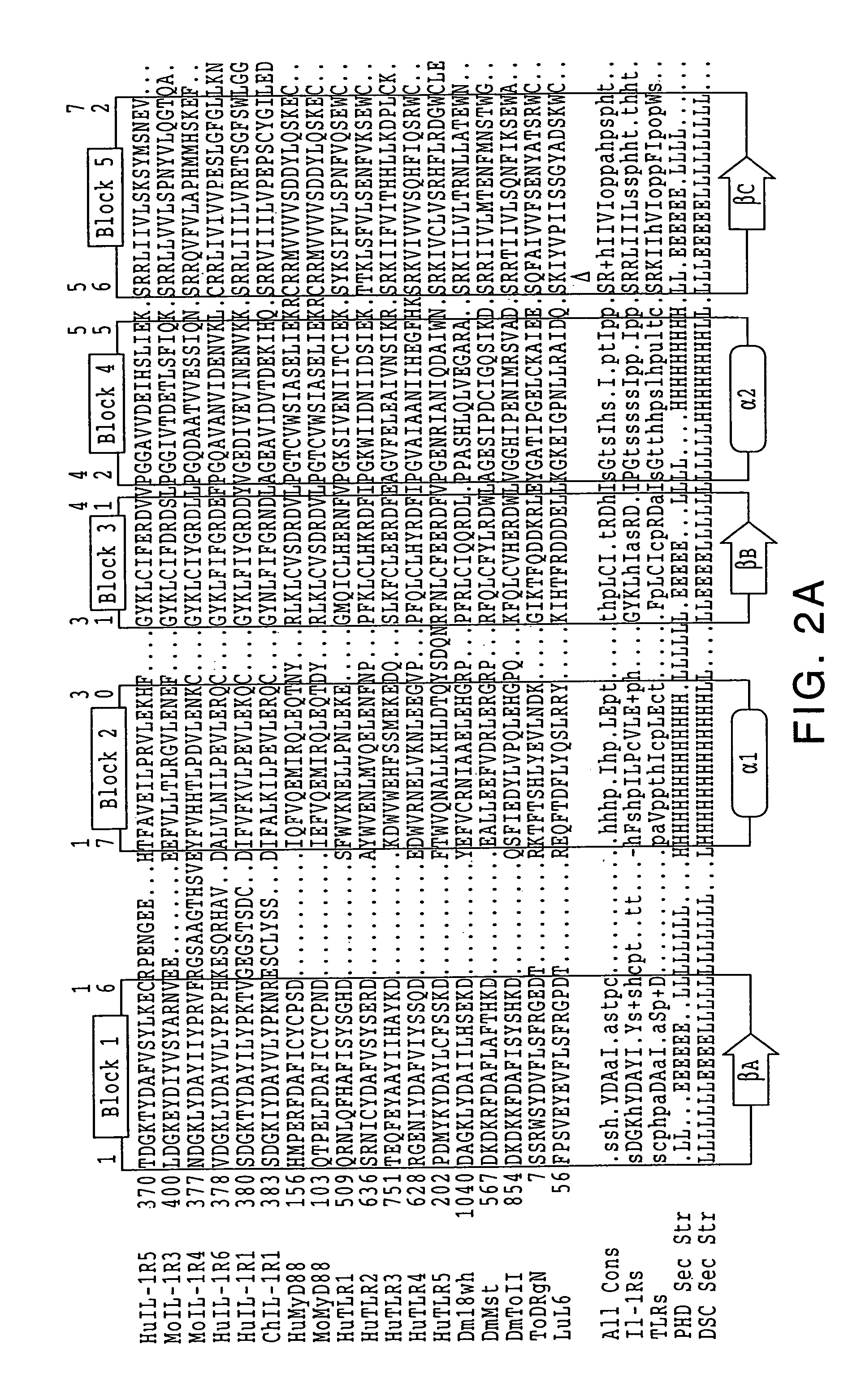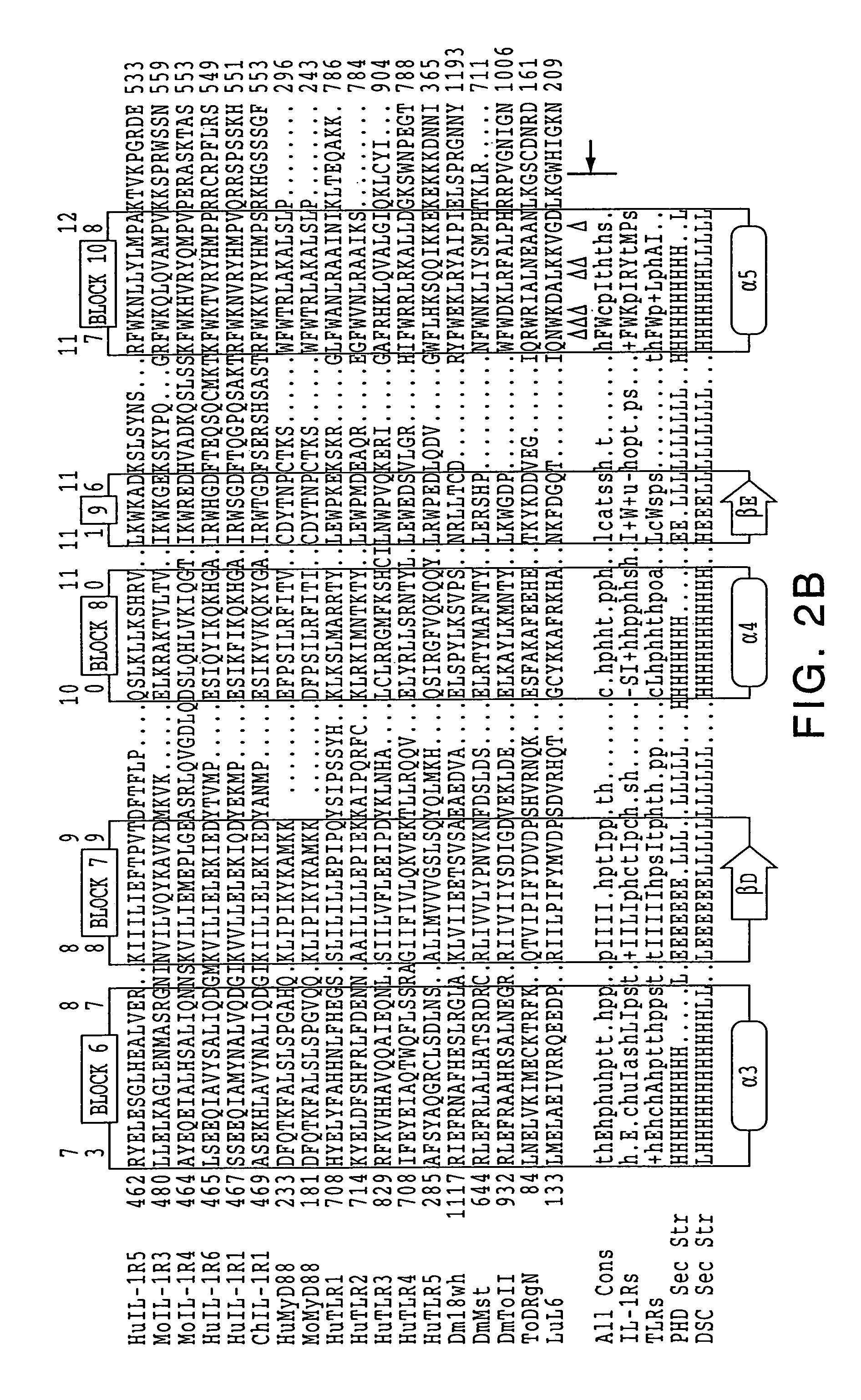Human receptor proteins; related reagents and methods
a human receptor and human protein technology, applied in the field of human receptor proteins, nucleic acids, proteins, antibodies, etc., can solve the problems of hampered research to better understand and treat various immune disorders
- Summary
- Abstract
- Description
- Claims
- Application Information
AI Technical Summary
Benefits of technology
Problems solved by technology
Method used
Image
Examples
example i
General Methods
[0186]Some of the standard methods are described or referenced, e.g., in Maniatis, et al., Molecular Cloning, A Laboratory Manual, Cold Spring Harbor Laboratory, Cold Spring Harbor Press (1982); Sambrook, et al., Molecular Cloning: A Laboratory Manual, (2d ed.), vols. 1-3, CSH Press, NY (1989); Ausubel, et al., Current Protocols in Molecular Biology, Greene / Wiley, New York (1987). Methods for protein purification include such methods as ammonium sulfate precipitation, column chromatography, electrophoresis, centrifugation, crystallization, and others. See, e.g., Deutscher, “Guide to Protein Purification” in Methods in Enzymology, vol. 182 (1990), and other volumes in this series; and manufacturer's literature on use of protein purification products, e.g., Pharmacia, Piscataway, N.J., or Bio-Rad, Richmond, Calif. Combination with recombinant techniques allow fusion to appropriate segments, e.g., to a FLAG sequence or an equivalent which can be fused via a protease-remo...
example ii
Novel Family of Human Receptors
[0192]The discovery of sequence homology between the cytoplasmic domains of Drosophila Toll and human interleukin-1 (IL-1) receptors suggests that both molecules are used in signaling pathways that involve Rel-type transcription factors. This conserved signaling scheme governs an evolutionarily ancient immune response in both insects and vertebrates. We report the molecular cloning of a novel class of putative human receptors with a protein architecture that is closely similar to Drosophila Toll in both intra- and extra-cellular segments. Five human Toll-like receptors, designated TLRs 1-5, are likely the direct homologs of the fly molecule, and as such could constitute an important and unrecognized component of innate immunity in humans; intriguingly, the evolutionary retention of TLRs in vertebrates may indicate another role, akin to Toll in the dorso-ventralization of the Drosophila embryo, as regulators of early morphogenetic patterning. Multiple t...
example iii
Amplification of TLR Fragment by PCR
[0219]Two appropriate primer sequences are selected (see Tables 1 through 10). RT-PCR is used on an appropriate mRNA sample selected for the presence of message to produce a partial or full length cDNA, e.g., a sample which expresses the gene. See, e.g., Innis, et al., PCR Protocols: A Guide to Methods and Applications, Academic Press, San Diego, Calif. (1990); and Dieffenbach and Dveksler, PCR Primer: A Laboratory Manual, Cold Spring Harbor Press, Cold Spring Harbor, N.Y. (1995). Such will allow determination of a useful sequence to probe for a full length gene in a cDNA library. The TLR6 is a contiguous sequence in the genome, which may suggest that the other TLRs are also. Thus, PCR on genomic DNA may yield full length contiguous sequence, and chromosome walking methodology would then be applicable. Alternatively, sequence databases will contain sequence corresponding to portions of the described embodiments, or closely related forms, e.g., alt...
PUM
| Property | Measurement | Unit |
|---|---|---|
| temperatures | aaaaa | aaaaa |
| temperatures | aaaaa | aaaaa |
| temperatures | aaaaa | aaaaa |
Abstract
Description
Claims
Application Information
 Login to View More
Login to View More - R&D
- Intellectual Property
- Life Sciences
- Materials
- Tech Scout
- Unparalleled Data Quality
- Higher Quality Content
- 60% Fewer Hallucinations
Browse by: Latest US Patents, China's latest patents, Technical Efficacy Thesaurus, Application Domain, Technology Topic, Popular Technical Reports.
© 2025 PatSnap. All rights reserved.Legal|Privacy policy|Modern Slavery Act Transparency Statement|Sitemap|About US| Contact US: help@patsnap.com



